Spicer Family
See also : Spicer's Mills and Bakery
As the windows of Spicer's headquarters at the corner of Trimgate St. and Canon Row pictured below show, the Spicer family was an important family in Navan, associated originally with milling, then baking and confectionary and later animal meal. Six generations of the Spicer family operated what was one of the most successful business operations in the county for 178 years until it fell under the economic collapse in 2012.
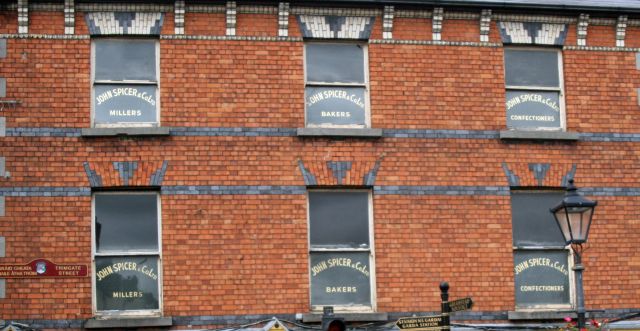
The Spicer family can trace its origins back 6 generations to 1743 when the great, great, great, great grandfather of the last Managing Director was born. The history of the Spicer family is intertwined with the development of agriculture in Meath. The first John Spicer, 1743-1804 is buried in Donaghmore cemetery along with Mary, his wife (1755-1794).
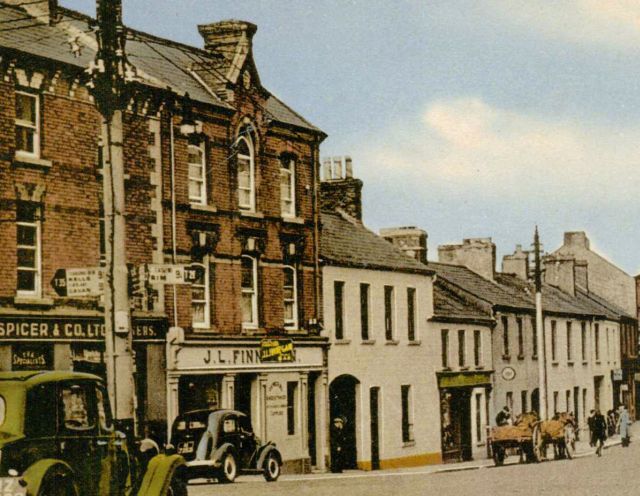
(above) Spicer's Corner Trimgate Street c. 1940s
The son of this first John Spicer, Patrick Spicer, (b.1791) is recorded in the 1821 Census as being a "meal monger", and living in Academy St. He died before 1840. His wife Mary, a flax spinner was born in 1789. There is no record of her death. On the date of the 1821 Census they are recorded as having 6 children, one of whom John, developed the business. The other children recorded by the 1821 Census are Anne (10), Mary (9), Bridget (6), John (4), Patrick (4), Thomas (1). The 2nd John Spicer (1817-1871) died aged 53, and is buried in Donaghmore Cemetery. His wife was also called Mary.
Slater's Directory (1856) makes no mention of a mill, but he must have bought one as shortly after his son (who we shall call John Spicer lll) was born in 1853, the family moved to Blackwater House which is located beside the old Blackwater Mill.
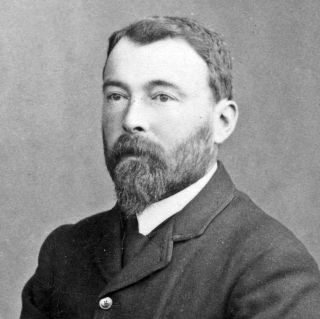 John Spicer lll (1853-1922), pictured left,
John Spicer lll (1853-1922), pictured left,
was probably the most dynamic figure in the development of the company. He was educated in Navan, in Mount St. Mary's College near London and in Belgium, before returning home to take part in his father's extensive businesses. In the 1880s, he married Mary McCann, sister of James McCann the sitting M.P. for the St. Stephen's Green Division in Dublin (and also entrepreneur and friend to Navan and its people). John Spicer lll and Mary McCann had 11 children together.
He updated the milling process in the old Conolly Clarke & Fay Mill on the Blackwater and from stone grinding to a roller process; he bought a bakery to deal with the increased productivity which more efficient milling created. This was located on the Boyne Rd.
He established branches of his flourishing bakery in Kells, Trim and Balbriggan.
He had many other business interests. He purchased corn for export to England, a move which benefitted local farmers greatly. He himself farmed succcessfully; he owned the Club House Hotel (later known as the Russell Hotel, now the Newgrange Hotel), which in the early part of the 20th century was patronised by English clientele coming into the area for the sporting season. He sold the Club in 1920, 2 years before he died.
He owned 3 mills, the Blackwater Mill mentioned earlier, one in Ludlow St. and the third near his Bakery on the Boyne Rd.
He bought the mansion and demesne at Belmont Navan.
His contribution to the life of the town was enormous. He was a staunch Parnellite, and remained loyal to him after the Parnell split. When the Land League was started in Meath in his offices in Ludlow St, he was present with Michael Davitt who had served as M.P. for Meath in the 1890s.
His interest in the affairs of the town began quite early in his career. He became a member of the Town Commissioners early in the 1880s and continued as a member when it became Navan Urban Council in 1899, a position he held as chairman until 1920.
He was the chief mover in the scheme to supply water to Navan at the time and also in erecting workman's dwellings in three terraces. He was also elected a member of Meath County Council in 1899 and continued as a member until 1912 when he was succeeded by his son, another John Spicer. Another son, Jim Spicer, became a member of Navan Urban Council.
He installed a plant to generate electric light for his various premises, and expanded the plant to cater for the people of Navan. Practically all the main businesses and residences in the town were lighted by this plant. In 1920, the new UDC took over the job of providing lighting for the town, and John Spicer lll gave up his rights to the site of a HEP station at the back of Ludlow St. There were three interests involved in the site - John Spicer, James McCann and the Murphy estate. The first two were easily dealt with but the Murphy estate had some years to run independent of its letting to John Spicer. In typical no nonsense manner John Spicer bought out the Murphy interest and placed the site at the disposal of the Council.
John Spicer lll died in 1922. By any standards he was a remarkable man and it is fitting to reproduce the tribute paid by his obituary writer
"...A man of whom Navan and Meath are proud, a man whose memory will live long in the hearts of the people, whose monument is in the midst of the community in the great business he worked up and in the many civic enterprises which he inaugurated".
John Spicer lll is buried in St. Mary's Cemetery, along with his wife Mary.
*******
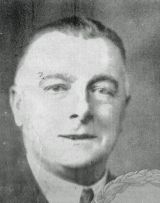
John Spicer lV 1882-1953
In 1922, control of the company passed to John Spicer lV.
The development of the company during his tenure was one of steady progress. New ventures were started and significant improvements were made. John Spicer lV was also a member of Meath County Council.
Probably the major change under his management was the conversion of the Blackwater Mill from water power to electricity in the late 1940s. Part of the old mill wheel still existed in 1984 in the bowels of the building.
After WW2, the company's drying and storing facilities were expanded and it started producing balanced rations for cattle.
When the Administrator of Navan parish, Very Rev. Dr. Dunne, was stuck for a site for a new primary school he approached John Spicer who donated the land on which the present Scoil Mhuire stands.
He was a founder member of Bellinter Park Golf Club now Royal Tara. He was captain of Bellinter Park Golf Club and president of County Louth Golf Club. He captained the County Meath Cricket Club.
A sister of John Spicer was Madeleine Spicer an accomplished singer. She was trained in Italy and on many occasions she sang in the Gaiety Theatre, Dublin, the Alhambra and d'Oyly Carte in London and La Scala in Milan. She was director of musical societies in Navan and Trim in the 1950s.
John Spicer IV died in 1953 and is buried in St. Mary's Cemetery. His wife was Pauline, and they had one son John, and four daughters Maureen Dorgan, Blackwater House, Navan; Gladys Spicer, Blackwater House; Poppy Fairs, Lymm, Cheshire; Betty Pracy, Banbury, Oxfordshire.
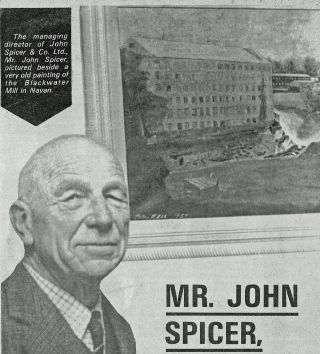
John Spicer V
He started school at the age of eight in Our Lady's Bower, Athlone, then a co-ed but later an all girl school. Two years later he moved to Stoneyhurst College, Lancashire where he received the equivalent of primary and secondary education.
He was a versatile athlete in his younger days. He played as a first and second row forward for Wanderers Rugby Club. He played for three years with Leinster. He was on the final trial teams for Ireland twice, but his chances of gaining an international cap were disrupted by the Second World War, when he was at the height of his playing prowess.
He was chosen on a Rest of Ireland team and there is a photograph of him being introduced to President Douglas Hyde prior to a game in 1940.
In tennis he won several Provincial Towns Cups. His sisters Poppy and Gladys were on those teams. He won the singles championship in that competition twice in the 1950s. He won county championships in Meath, Longford, Louth and Westmeath. He took the Connaught mixed doubles championship in Galway and was the men's Number 1 in Bective Lawn Tennis Club, Dublin for many years. He played hockey in Navan, Trim and Ratoath. He got a trial for the Connacht interprovincial team. The "provinces" of hockey were Dublin, Munster and Ulster and the remainder of Ireland was designated as Connacht. He was a huntsman with Tara Harriers, the Meath Hounds and the Ward Union. He was twice captain and president for seven years of Bellinter Park Golf Club now Royal Tara.
He learned the bakery trade in the London Borough Polytechnic in the 1930s and then returned to work in the family business. He performed various duties before graduating to the position of assistant manager and following the death of his father in 1953, he assumed full control with the title of managing director and chairman of the board of directors. He modernised the Boyne Road bakery and set up a confectionery plant in Trim. The most significant development during his reign was the expansion in the bread van fleet to 50 vans.
He describes his contribution to the ongoing success of the company as "steering a steady course" but he may be somewhat modest in that. He did not have an active interest in politics. However he was a founder member of Navan Chamber of Commerce and became its first president and continued his membership. But being a Spicer and with land in Navan, he could not escape the needs of the town and, though he admitted he had no desire to, he sold the site for the vocational school at Abbey Road which was opened in 1965. When the County Council planned the ring road, he was again in the firing line. Part of the road from Watergate Street to the Kells Road passed through his land and he sold an area needed for that road.
The generosity of the Spicer family to the people of Meath also was in evidence in the late 1960s when the Navan to Drogheda canal, which the company still owned, was handed over to An Taisce.
In 1957-58 he acquired the Fitzsimons Bakery in Kells. He extended the bakery at the Boyne Road premises and installed a modern plant there. The process took five years and was completed in 1982. The company expanded its production facilities in Trim in 1953 when equipment for manufacturing confectionery was installed, in addition to the bakery and shop.
About 1969 the company started producing meal rations for cattle, pigs and poultry under the brand name "Farmore" and since 1982 produced calf and dairy nuts and pellets for poultry, also under the Farmore brand name. Many farmers would not have been as successful if they did not have a reliable and convenient market for their produce and a milling service to grind and roll their corn. There were many mills in the county in the late 1940s, but as farmers began to grow less corn most of these disappeared. Spicers continued to mill even when it meant bringing in grain from America, but in 1984 there was a resurgence in the area as farmers saw the benefits of meeting the needs of Spicers.
Spicer's vans were a common sight on the roads of Meath, Louth, Dublin, Cavan, Westmeath and Kildare, and it is the expansion of this fleet which, possibly has been the most significant in the company since the 1950s. The directors of the company in 1984 were: John Spicer, managing director and chairman of the board of directors, his sisters Maureen Dorgan and Gladys Spicer and John Spicer's wife Elizabeth. John Spicer attributed the success of the company to good industrial relations, the expertise of its employees, the loyalty of its staff and customers and the quality of the bread and confectionary. It was a tribute to good industrial relations that not one day's delivery was lost since the bakery was acquired in 1899. Many of the workers fathers had been with the company and this continuity had been a stabilising influence.
Sources: Meath Chronicle Archives and Meath Chronicle Commemorative Issue, (1984), celebrating 150 years of the Spicer Family in Navan
Divine Right? The Parnell Split in Meath, David Lawlor, Cork University Press, 2007